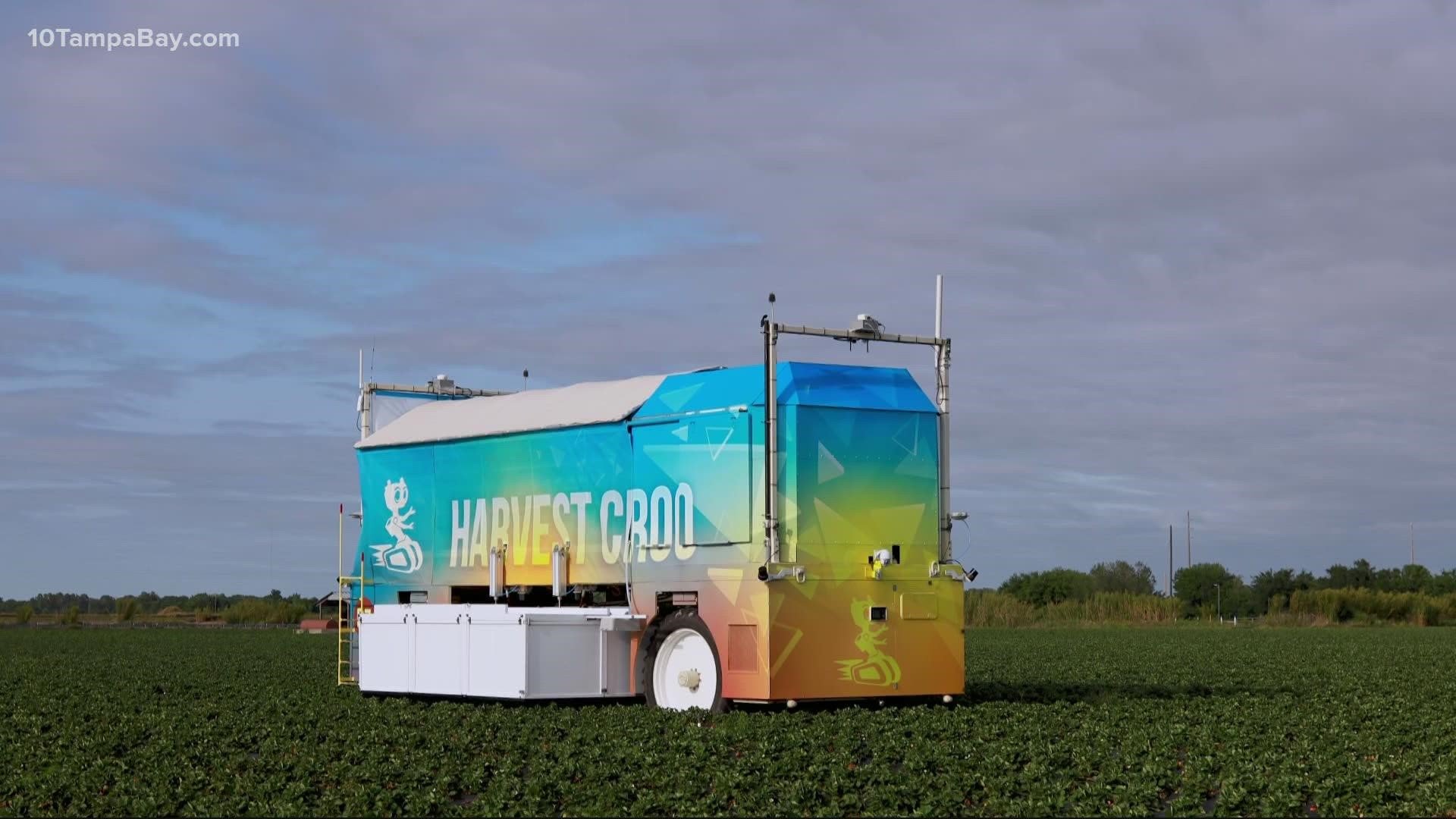PLANT CITY, Fla. — One of the biggest strawberry growers in the Tampa Bay region says it’s close to deploying a fully automated strawberry harvesting robot.
Wish Farms has been helping to develop the robotic picker for years. It’s called the Harvest CROO, a fully automated strawberry-picking robot that does the job of about six human workers.
“It will transform the industry,” says Gary Wishnatzki, who owns Wish Farms. “It is approaching human clearance rates. And we believe with a few small modifications, we’re ready to become commercial.”
The Harvest CROO is 32-feet long and 18-feet wide. It can harvest about 16 plants at a time. That’s around eight acres a day.
It’s taken years to develop, overcoming all sorts of challenges like spotting the berries hidden under leaves. It also turned out to be incredibly challenging to create a machine that could identify ripe berries, pick just those, and then handle them delicately enough not to damage the fruit or the rest of the plant.
With a series of claws, sensors and even a cleaning solution that gently transports the fruit, the Harvest CROO identifies ripe, pickable berries in 15 milliseconds, separates and packages them, too.
“At that point, the technology in the robot takes over to move the leaves, expose the strawberries,” said Harvest CROO CEO Joseph McGee. “It spins around, identifies the ripe strawberries, calculates a target solution and picks that strawberry.”
Of course, as farmers rely more on Harvest CROO, some question what happens to the human crew: the thousands of strawberry pickers who’ve had the job for generations.
Wishnatzki says the number of workers willing to do the job has been in decline for years.
“Some people may look at this and say – oh – they’re putting people out of work. That’s not the case,” Wishnatzki said. “The domestic people aren’t showing up anymore. But the ones that do show up, there’s going to be jobs for them. And they’re going to be better higher-paying jobs. It’s not going to be the backbreaking work of stooping over and picking strawberries all day. It’ll be the technical jobs. It’ll be the mechanical jobs. And I think they pay more and are better for people.”
Wishnatzki says for years, Mexico’s economy has been growing and the number of migrants coming here to work has been dwindling. The Harvest CROO, he says, was the answer to an inevitable labor shortage, he says, and will cost considerably less than the estimated $2 billion a year spent on human workers.
“If we don’t solve this problem with automation,” said Wishnatzki, “I really fear what the future is going to be for the strawberry industry in general and also the availability and affordability of strawberries for consumers.”
For now, the Harvest CROO will start picking berries in Florida, but over the next couple of years, they expect to move into California.
That will be a major shift since about 85% of the strawberries harvested in the U.S. are picked in California. About 15% are picked in Florida.

